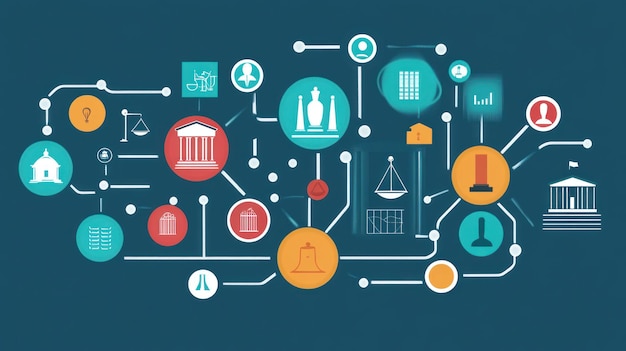Cybersecurity Threats on the Rise: US Government Actions

The US government is actively combating escalating cybersecurity threats through enhanced regulations, increased funding for cybersecurity agencies, and public-private partnerships aimed at protecting citizens and critical infrastructure.
The digital age has brought unprecedented connectivity, but also a surge in cybersecurity threats on the rise. The US government is actively working to protect its citizens and infrastructure from these evolving dangers.
Understanding the Rising Tide of Cybersecurity Threats
Cybersecurity threats are becoming increasingly sophisticated and prevalent, impacting individuals, businesses, and critical infrastructure. Understanding the nature and scope of these threats is crucial for effective defense strategies.
The Evolving Landscape of Cyber Threats
The digital world is constantly evolving, and so are the tactics used by cybercriminals. From ransomware attacks to data breaches, new threats emerge regularly, making it challenging to stay ahead.
Common Types of Cybersecurity Threats
Several types of cyber threats pose significant risks. Phishing scams, malware infections, and denial-of-service attacks are among the most common, each designed to exploit vulnerabilities in systems and networks.
- Ransomware Attacks: Cybercriminals encrypt a victim’s data and demand a ransom for its release.
- Data Breaches: Unauthorized access to sensitive information, leading to potential identity theft and financial loss.
- Phishing Scams: Deceptive emails or messages designed to trick individuals into revealing personal information.
- Malware Infections: Malicious software that can damage or compromise computer systems.
The rise in these threats necessitates a robust and proactive response from both individuals and the government to mitigate potential damage and protect sensitive information.
Government Initiatives to Combat Cybercrime
The US government has implemented various initiatives and strategies to combat cybercrime and enhance cybersecurity across all sectors. These efforts aim to create a safer digital environment for citizens and businesses.
Executive Orders and Legislation
Executive orders and legislation play a critical role in shaping the government’s cybersecurity policies and initiatives. These directives provide a framework for agencies to follow and resources to utilize.
Key Cybersecurity Legislation
Several key pieces of legislation have been enacted to strengthen the nation’s cybersecurity posture. These laws focus on information sharing, infrastructure protection, and incident response.
- Cybersecurity Information Sharing Act (CISA): Encourages the sharing of cyber threat information between the government and the private sector.
- Federal Information Security Management Act (FISMA): Establishes a framework for securing federal government information and systems.
- National Cybersecurity Protection Act (NCPA): Enhances the Department of Homeland Security’s (DHS) ability to protect federal networks.
These legislative efforts demonstrate the government’s commitment to prioritizing cybersecurity and fostering collaboration to address evolving threats effectively.

Strengthening Federal Cybersecurity Agencies
Federal cybersecurity agencies are on the front lines of defending against cyber threats. Enhancing their capabilities and resources is essential for effective cyber defense.
Key Agencies Involved in Cybersecurity
Several key agencies are involved in cybersecurity, each with its own unique roles and responsibilities. The Department of Homeland Security (DHS), the National Security Agency (NSA), and the Federal Bureau of Investigation (FBI) are among the most prominent.
Roles and Responsibilities of Key Agencies
Each agency plays a vital role in protecting the nation’s digital infrastructure and responding to cyber incidents.
The DHS is responsible for coordinating cybersecurity efforts across the federal government and providing assistance to state and local governments. The NSA focuses on intelligence gathering and protecting national security systems. The FBI investigates cybercrimes and works to bring perpetrators to justice.
These agencies collaborate to share information, coordinate responses, and develop strategies to counter cyber threats effectively.
Public-Private Partnerships for Enhanced Cybersecurity
Collaboration between the public and private sectors is crucial for enhancing cybersecurity. These partnerships leverage the expertise and resources of both sectors to address common threats and challenges.
The Importance of Collaboration
Cybersecurity is a shared responsibility, and effective collaboration between the public and private sectors is essential for success. By working together, organizations can share threat intelligence, coordinate responses, and develop best practices.
Examples of Successful Public-Private Partnerships
Several successful public-private partnerships have been established to address specific cybersecurity challenges. These partnerships involve sharing information, conducting joint exercises, and developing innovative solutions.
- Information Sharing and Analysis Centers (ISACs): Industry-specific organizations that share cyber threat information among members and with the government.
- Joint Cyber Defense Collaborative (JCDC): A partnership between the Cybersecurity and Infrastructure Security Agency (CISA) and private sector organizations to develop and implement cybersecurity strategies.
- Cybersecurity Framework Development: Collaboration between government and industry experts to develop cybersecurity frameworks and best practices.
Educating and Empowering Citizens Against Cyber Threats
In addition to government initiatives, educating and empowering citizens is crucial for creating a cyber-secure society. Individuals need to be aware of the risks and take steps to protect themselves online.
Raising Awareness About Cyber Threats
Raising awareness about cyber threats is the first step in empowering citizens to protect themselves. Public awareness campaigns can educate individuals about common scams, phishing tactics, and other online risks.

Tips for Staying Safe Online
Simple precautions can significantly reduce the risk of falling victim to cybercrime.
Using strong passwords, avoiding suspicious links, and keeping software up to date are essential steps for staying safe online. Additionally, individuals should be cautious about sharing personal information and avoid clicking on unsolicited attachments.
By following these tips, citizens can protect themselves and contribute to a more secure digital environment.
The Future of Cybersecurity in the United States
The future of cybersecurity in the United States depends on continued innovation, collaboration, and investment in cybersecurity technologies and strategies. As cyber threats evolve, so too must the nation’s defenses.
Emerging Technologies and Strategies
New technologies and strategies are constantly being developed to address emerging cyber threats. Artificial intelligence (AI), machine learning, and blockchain are among the most promising technologies for enhancing cybersecurity.
Continued Investment in Cybersecurity
Continued investment in cybersecurity is essential for staying ahead of evolving threats. This includes funding for research and development, training for cybersecurity professionals, and support for cybersecurity education programs.
By prioritizing cybersecurity and investing in innovative solutions, the United States can maintain its leadership in the digital age and protect its citizens and infrastructure from cyber threats.
| Key Point | Brief Description |
|---|---|
| 🛡️ Rising Threats | Cyber threats are becoming more sophisticated and frequent. |
| 🏛️ Government Initiatives | The US government is combating cybercrime through legislation and executive orders. |
| 🤝 Public-Private Partnerships | Collaboration is key to sharing threat intelligence and developing solutions. |
| 👨💻 Citizen Empowerment | Educating and empowering citizens is essential for online safety. |
[Frequently Asked Questions]
What are the most common cybersecurity threats?
▼
Common threats include ransomware, phishing, malware, and data breaches that target individuals, businesses, and government entities, exploiting vulnerabilities in systems and networks.
▼
The US government is implementing legislation, executive orders, and initiatives to strengthen cybersecurity defenses, enhance information sharing, and improve incident response capabilities.
▼
Public-private partnerships are crucial for sharing threat intelligence, coordinating responses, and developing innovative cybersecurity solutions, leveraging the expertise of both sectors.
▼
Individuals can protect themselves by using strong passwords, avoiding suspicious links, keeping software updated, and being cautious about sharing personal information online.
▼
Emerging technologies in cybersecurity include artificial intelligence (AI), machine learning, and blockchain, which enhance threat detection, incident response, and data protection capabilities.
The US government is actively addressing the increasing cybersecurity challenges through comprehensive strategies, collaborative partnerships, and public awareness initiatives. By staying informed and taking proactive measures, citizens can contribute to a safer and more secure digital environment for all.
Read more content





